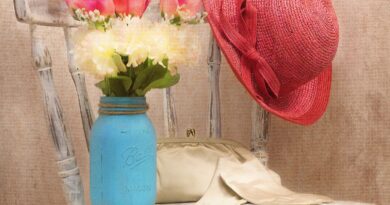Fashion and Culture: How Traditional Clothing Inspires Contemporary Style
Fashion and culture have always been intertwined, with traditional clothing serving as a rich source of inspiration for contemporary style. Traditional garments from various cultures around the world possess unique aesthetics, craftsmanship, and symbolism that continue to captivate designers and fashion enthusiasts alike. Incorporating elements of traditional clothing into modern fashion not only pays homage to cultural heritage but also fosters a sense of diversity, inclusivity, and creativity within the industry.
One of the most significant ways in which traditional clothing inspires contemporary style is through the use of textiles and patterns. Many traditional garments feature exquisite fabrics, such as silk, brocade, ikat, or batik, which are often handwoven or hand-dyed using traditional techniques passed down through generations. These textiles are not only visually striking but also possess a sense of authenticity and craftsmanship that resonates with the modern audience. Designers often incorporate these textiles into their collections, either by using them in their entirety or by adapting them to create new patterns and prints. By doing so, they infuse their designs with a sense of cultural heritage and create unique, eye-catching pieces.
Moreover, traditional clothing inspires contemporary fashion through its silhouettes and design elements. Many traditional garments have distinctive cuts, drapes, or embellishments that set them apart from Western-style clothing. Designers often reinterpret these elements, incorporating them into contemporary designs to create garments that are both modern and rooted in tradition. For example, the kimono-inspired wrap dresses or the Nehru collar on a tailored jacket are examples of how traditional garments have influenced contemporary fashion. These design elements not only add a touch of cultural flair but also bring a fresh perspective to modern clothing.
Traditional clothing also serves as a source of inspiration for color palettes and motifs in contemporary fashion. Different cultures have their own unique color symbolism and motifs, often tied to their customs, beliefs, or environment. By incorporating these colors and motifs into modern designs, fashion designers create visually appealing garments that tell a story and evoke a sense of cultural identity. For instance, the vibrant colors and intricate embroidery of Mexican textiles or the geometric patterns found in African fabrics have influenced contemporary fashion, appearing in clothing, accessories, and even in runway shows. This fusion of traditional and contemporary elements not only adds depth and visual interest to fashion but also celebrates cultural diversity and promotes cross-cultural dialogue.
Beyond the creative aspect, the incorporation of traditional clothing into contemporary fashion also plays a crucial role in preserving cultural heritage. As fashion designers draw inspiration from traditional garments and techniques, they raise awareness and appreciation for different cultures. This, in turn, helps to preserve and revitalize traditional crafts and skills that might otherwise be at risk of being lost. By incorporating elements of traditional clothing into their designs, designers create a platform for cultural exchange and foster a sense of pride and identity within communities.
In conclusion, traditional clothing serves as a constant source of inspiration for contemporary fashion. From textiles and patterns to silhouettes and design elements, traditional garments offer a wealth of inspiration that designers continue to explore and reinterpret. By incorporating these elements into modern designs, fashion not only pays homage to cultural heritage but also promotes diversity, inclusivity, and creativity within the industry. Traditional clothing inspires contemporary fashion, creating a bridge between the past and the present and allowing us to celebrate and appreciate the beauty and richness of different cultures.









